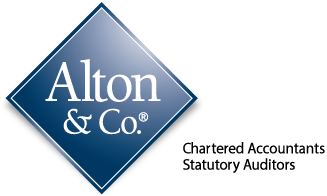When the Government rolled out the bounce-back loan scheme (BBLS), it was easy to mistake it as a grant, given how quickly and easily businesses could get them.
It’s also easy to mistake how important it is to pay back a bounce-back loan, given how the Government will cover 100% of the loan for lenders if a business defaulted on the loan.
Despite this, your business is and always has been 100% liable for the loan, so have you thought about how you’re going to pay it back?
What if I default on my bounce-back loan?
You might have heard there is no personal liability with a bounce-back loan, meaning the assets and possessions of incorporated business owners aren’t at risk if they default on it, outside of a few exceptional circumstances, including:
- the bounce-back loan was used to pay off another loan
- the company was insolvent when the loan was taken out
- there is evidence directors abused the loan scheme.
A lack of personal liability and the fact the Government will compensate lenders for any losses from defaulted loans, some business owners might be asking themselves what’s stopping them from not paying at all?
This isn’t an option, however – your business is still 100% liable for the loan and interest, so creditors may pursue a loan default with statutory demands, court action and bailiffs if you don’t pay back your bounce-back loan.
Worst-case scenario, that means if your company can’t pay it back, you may have reached the point of insolvency. If this applies to you, you should check in with us to make sure there are no other options.
Tips for repaying your bounce-back loan
Hopefully you see how important it is to have a repayment plan in place, so let’s quickly review your obligations.
Under the scheme, businesses could get a six-year term loan from £2,000 up to 25% of a business’s turnover, with the maximum amount of £50,000.
There is also interest to think about, set at a relatively low level 2.5% per annum, payable only after the first 12 months.
Some businesses might want to pay off their loan as quickly as possible. If they repay earlier than expected, they’ll pay less in interest, saving them money in the long run.
To do that, businesses need a strong cashflow. That means staying on top of invoices to get paid sooner, keeping your accounting up to date and forecasting your cashflow accurately.
If you experience seasonal peaks of sales, take the opportunity to repay more of the bounce-back loan – just remember to keep a cash reserve to provide a cushion if the unexpected happens.
Other businesses might benefit from a different approach, in which case we highly recommend the pay-as-you-grow scheme, which gives business owners the flexibility they need to repay their loan.
It offers three options that can be used alone or in combination. These are to:
- reduce monthly repayments for six months by paying interest only
- take a payment holiday for six months
- extend your loan term from six to ten years with the same 2.5% interest rate.
Each option has its advantages and disadvantages, but broadly speaking, the first two options are ideal for businesses that expect to be in a better position in the future, while the third is good for businesses that can only repay a small amount of the loan each month.
What other support is there?
Other support is out there for you to access if you’re still in trouble, whether that’s to pay off your bounce-back loan or just to keep the lights on.
This includes the recovery loan scheme, which is open to applicants until 31 December 2021.
Open to businesses that have already borrowed from any other COVID-19 support schemes, including the BBLS, it offers loans between £25,001 and £10 million with interest rates capped at 14.99%.
Support doesn’t have to be an extra loan or another Government scheme – it might be that you just need some clever budgeting and accounting, which we at Alton & Co have the knowledge and expertise to help with.
Get in touch with us on 020 7582 3000 or fill in a contact form to discuss your repayment plan.

